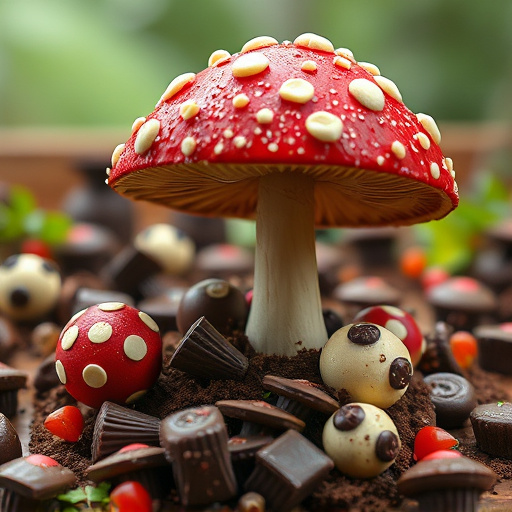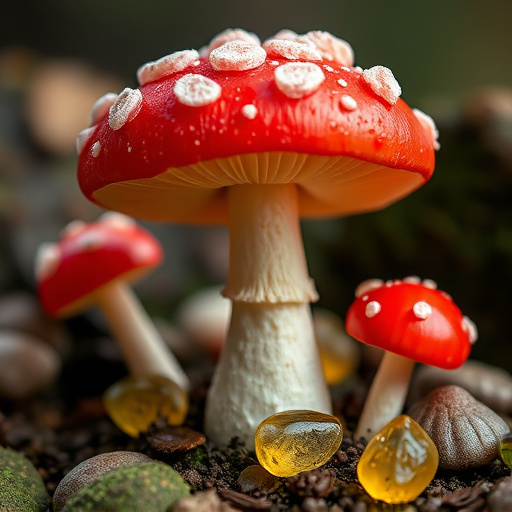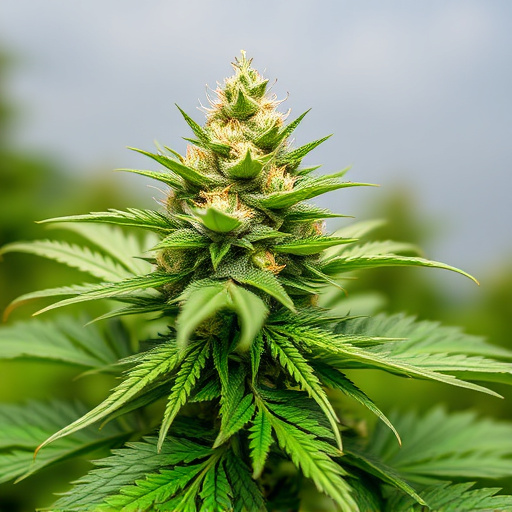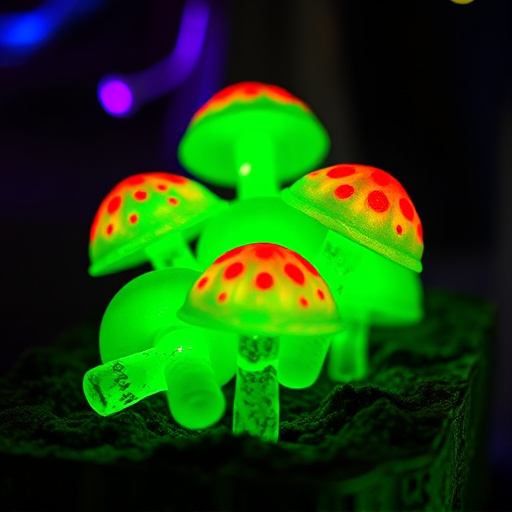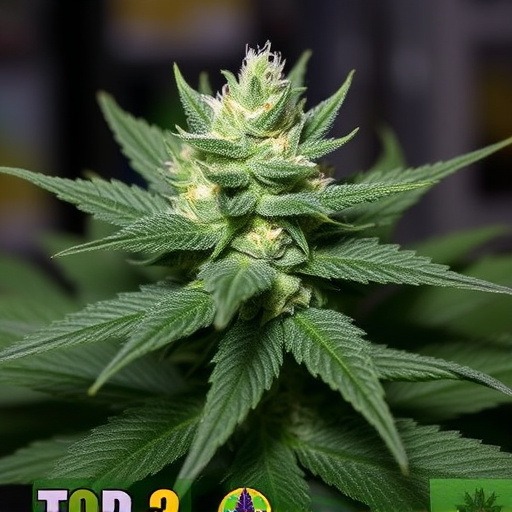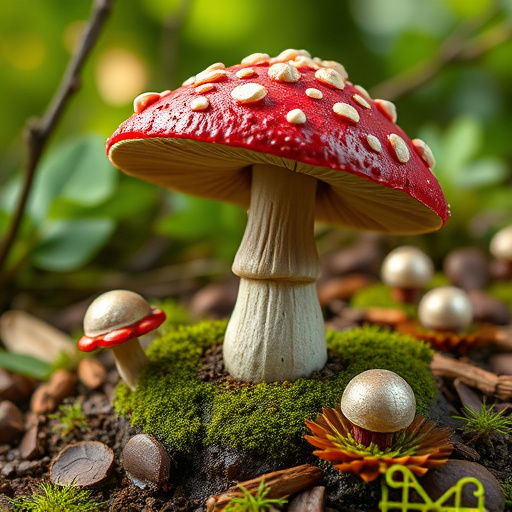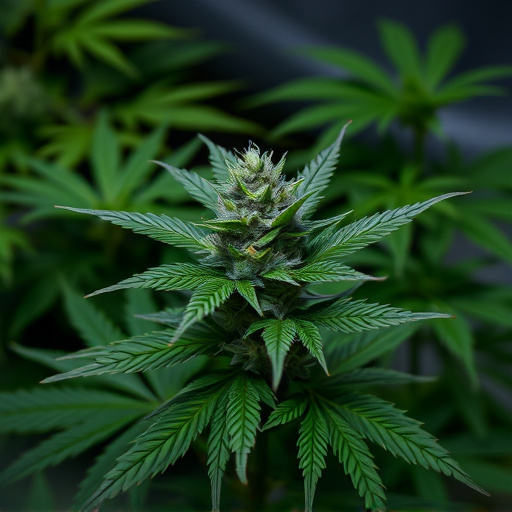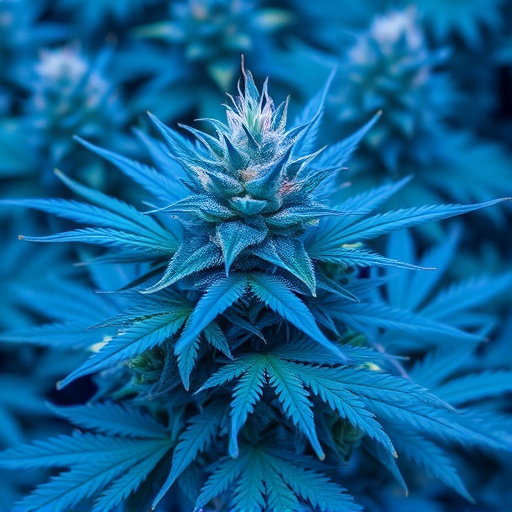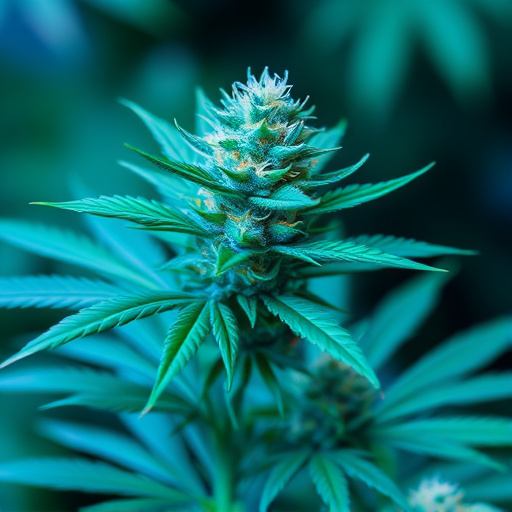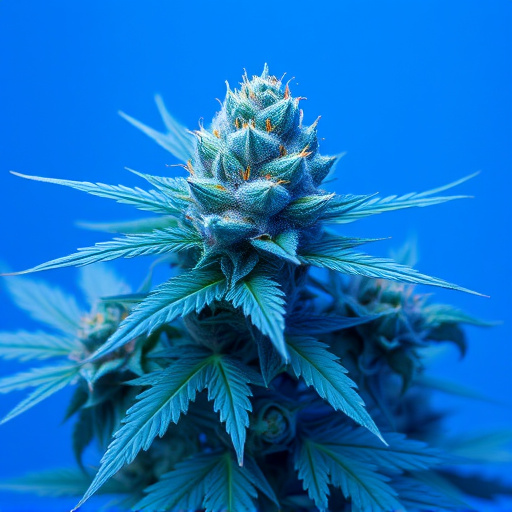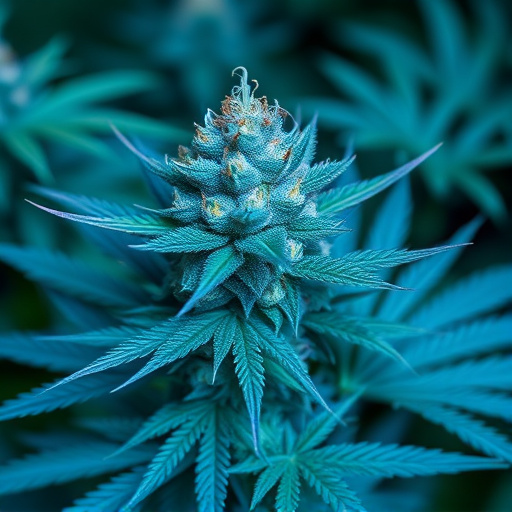Blue cannabis strains, rich in terpenes and with balanced THC and CBD levels, stimulate appetite through complex interactions with the endocannabinoid system. While lower THC may not directly cause hunger, these strains' terpene content enhances THC's effects on brain hunger regulators, leading to the iconic "munchies." Users seeking appetite stimulation find blue strains appealing for their ability to combat eating disorders and boost metabolism naturally.
Cannabis’ ability to stimulate appetite is well-documented, but the science behind it is just as intriguing. In this article, we explore the reasons why cannabis flower can make you hungry, focusing on the key players: terpenes and cannabinoids. Specifically, we delve into the unique properties of blue cannabis strains, known for their potent effects on increasing hunger and enhancing culinary experiences. Understanding these mechanisms offers insights into both the pleasure and potential therapeutic benefits associated with cannabis consumption.
- Understanding the Hunger-Stimulating Effects of Cannabis
- The Role of Terpenes and Cannabinoids in Appetite Stimulation
- Exploring Blue Cannabis Strains and Their Unique Properties for Inducing Hunger
Understanding the Hunger-Stimulating Effects of Cannabis
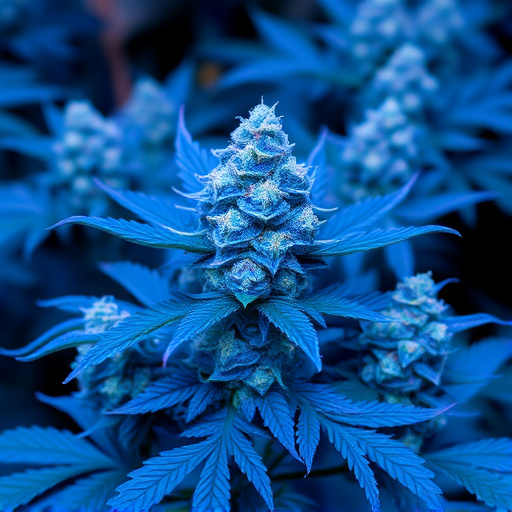
Cannabis has long been known for its ability to stimulate appetite, a phenomenon often referred to as “munchies.” But what’s behind this effect? Research suggests it’s a complex interplay between various compounds found in cannabis, including tetrahydrocannabinol (THC) and cannabidiol (CBD), and their interaction with our bodies’ endocannabinoid system. THC, specifically, binds to receptors in the brain that regulate hunger and reward, leading to increased appetite.
Blue cannabis strains, known for their high CBD content and low THC levels, are often sought after by users looking to experience potential therapeutic benefits without the intense hunger pangs associated with more potent varieties. While these strains may not induce as strong an appetite, they can still stimulate appetite in some users due to their interaction with the endocannabinoid system. Understanding the specific compounds and their effects is crucial for consumers to make informed choices about the cannabis products they use, catering to their individual preferences and needs.
The Role of Terpenes and Cannabinoids in Appetite Stimulation
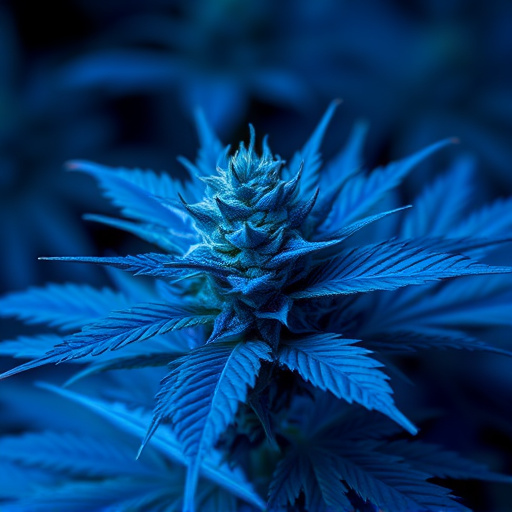
Cannabis flower’s ability to stimulate appetite is a well-documented phenomenon, and it’s largely attributed to the complex interplay of terpenes and cannabinoids present in the plant. Terpenes, known for their aromatic properties, also act as potent modulators of cannabinoid reception. Certain blue cannabis strains, rich in myrcene, a common terpene, have been linked to increased appetite. This is because myrcene binds to the same receptors targeted by THC, the primary psychoactive cannabinoid, but with much weaker effects. This interaction can enhance the overall appetite-stimulating properties of cannabis.
In addition to terpenes, cannabinoids like tetrahydrocannabinol (THC) and cannabidiol (CBD) play a significant role in this process. THC, notorious for its psychoactive effects, directly binds to cannabinoid receptors in the brain, particularly those involved in regulating appetite. CBD, on the other hand, indirectly influences appetite by potentially inhibiting the reabsorption of endocannabinoids, which are natural compounds that bind to these receptors and regulate various physiological processes, including hunger. The combined effect of these cannabinoids and terpenes contributes to the well-known “munchies” associated with cannabis consumption, particularly in blue cannabis strains known for their high terpene content.
Exploring Blue Cannabis Strains and Their Unique Properties for Inducing Hunger
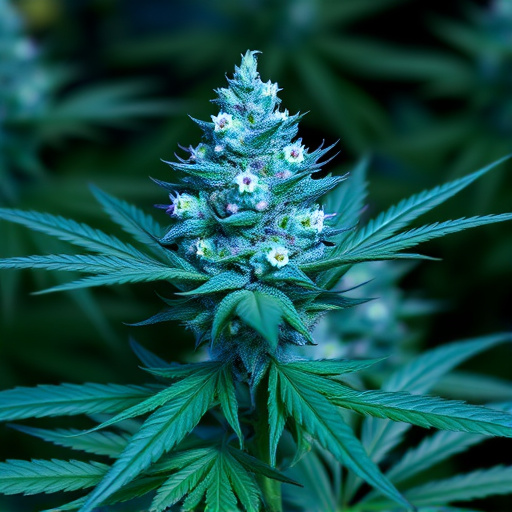
Blue cannabis strains have gained popularity among users seeking specific effects, including their unique ability to stimulate appetite. These strains often contain higher levels of certain cannabinoids, such as THC and CBD, which can interact with the body’s endocannabinoid system (ECS) to induce hunger. The ECS plays a crucial role in regulating various physiological processes, including digestion and metabolism, making it a key target for cannabis’ effects on appetite.
The specific properties of blue cannabis strains contribute to their reputation as effective hunger stimulants. Their balanced cannabinoid profiles can enhance the activity of endocannabinoid receptors, leading to increased hunger sensations. Additionally, some studies suggest that the terpene profile of these strains, which includes compounds like myrcene and linalool, may further amplify appetite-inducing effects. This combination makes blue cannabis strains a popular choice for individuals looking to combat eating disorders or enhance their appetite naturally.
Cannabis’ ability to stimulate hunger is a multifaceted phenomenon, with terpenes and cannabinoids playing key roles in appetite enhancement. Blue cannabis strains, known for their unique properties, offer a specific avenue for those seeking to induce a robust appetite. Understanding these effects not only enriches our knowledge of cannabis but also provides users with tailored options to meet their dietary needs, making responsible consumption and personal well-being a priority.

